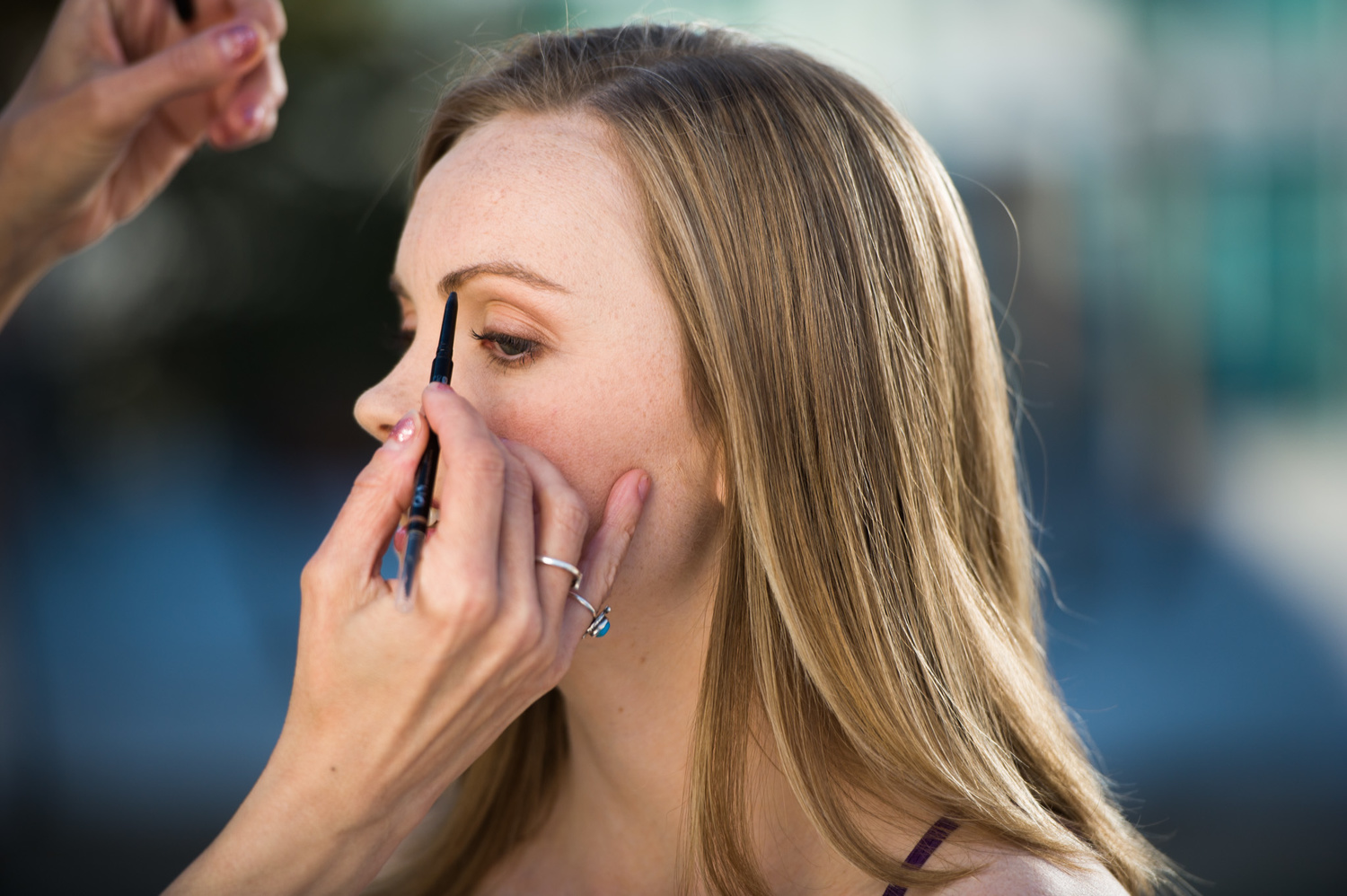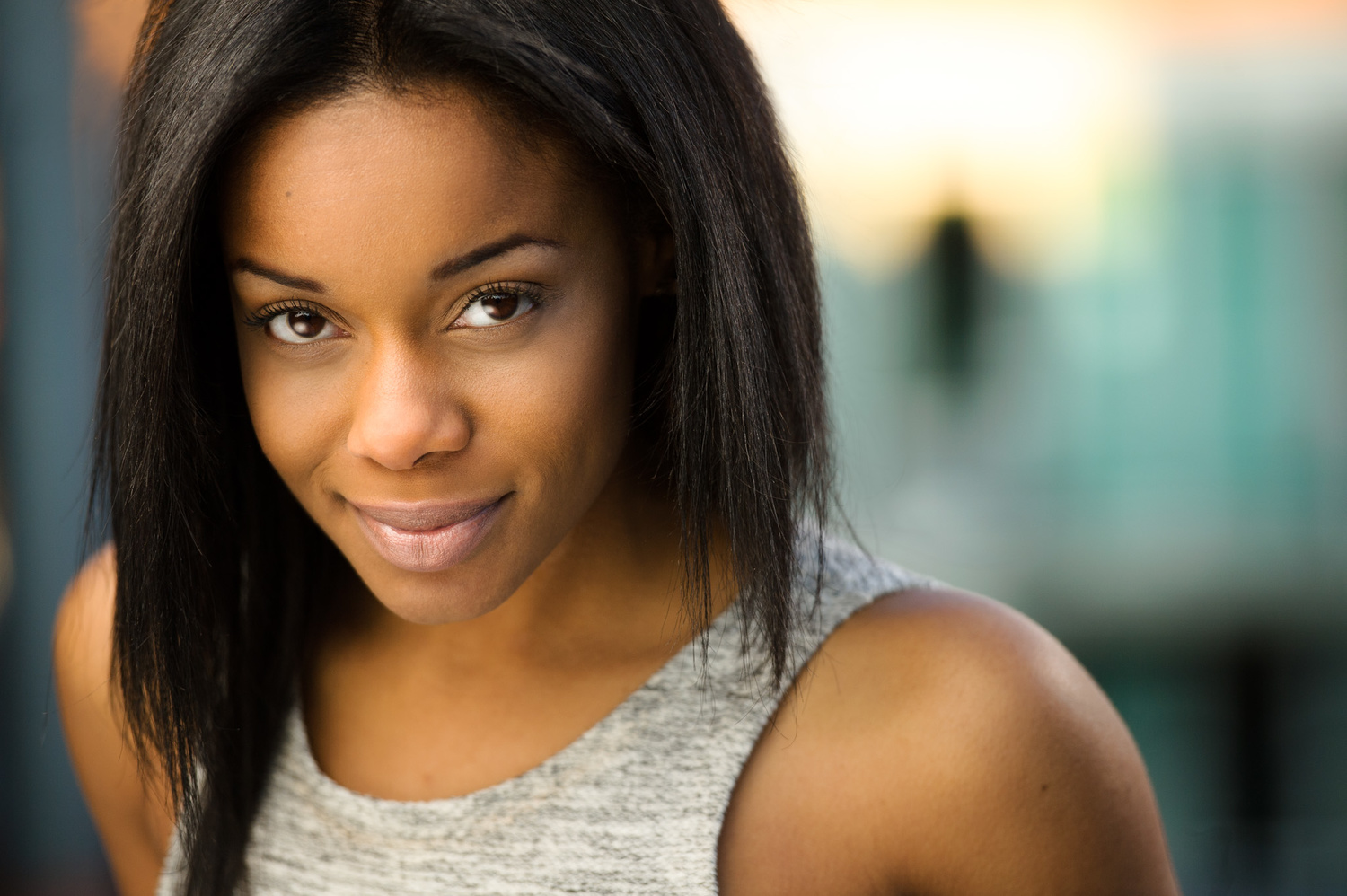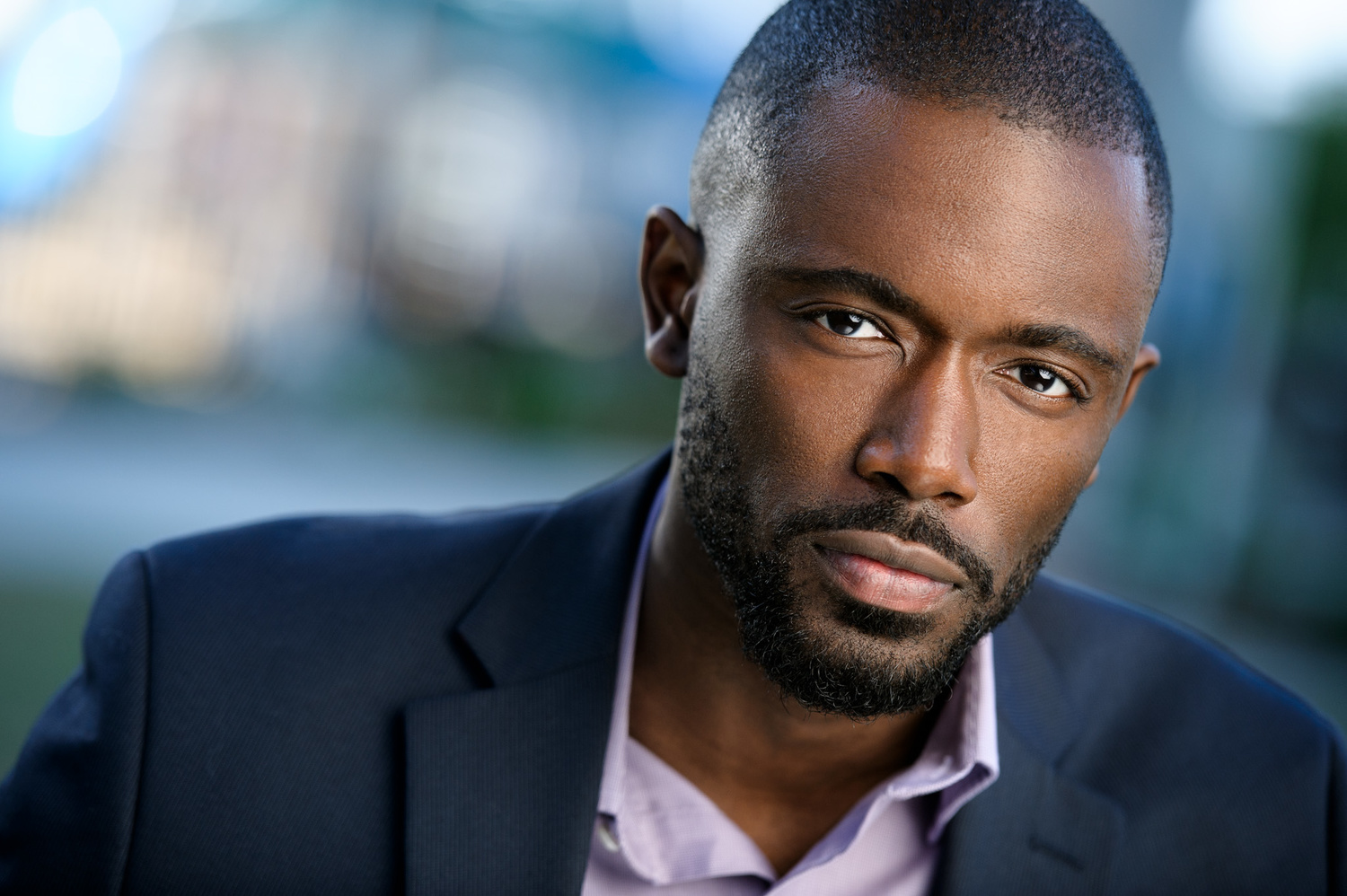Getting your clients comfortable in front of a camera is always a challenge. I still get a little nervous before a shoot so I can imagine what my clients must feel like. In part one of this series, we talked about the importance of the pre-shoot consultation and how it can start you off on a good path toward a successful headshot or portrait session. In this article, I want to talk about ways we can address skin issues with our clients, how to deal with makeup, when to use a makeup artist, and discuss the basics of getting clients comfortable and focused in front of the camera.I’m going to start with skin and makeup as I find these to be two of the most common things photographers and their clients worry about.
Skin Issues
Skin issues are a problem that many photographers have to learn to deal with in their portrait work. Of course our clients want their skin to look beautiful in their pictures, and as photographers we always want our images to be the best they can possibly be. Unfortunately, sometimes people get pimples or a rash. Skin problems can range from very minor to something you will want to reschedule your shoot for. And the biggest drag about these issues is that they can obviously wear on a client’s confidence level, which in turn will wear on a photographer’s confidence level. That is the one thing that can destroy a session quicker than anything: just imagine showing your client beautiful images and they don’t like any of them based on whatever skin issue they may have been experiencing at the moment. I’ve worked with clients with everything from Psoriasis to acne breakouts and many other unknown discolorations, or allergic reactions, and I believe there are three ways to approach this problem.
Solution 1: Reschedule the Shoot
This is obviously best done in advance of the actual shoot date. During the pre-shoot consultation it’s important to tell your clients that if they experience any kind of sickness, allergy or skin issue to inform you immediately. This way you both can start to talk through the problem. Have them send you a picture of the issue, and evaluate your options. Can it be handled in post-production? Is it something a makeup artist can fix? Maybe shoot an email to your makeup artist to get their take on the problem. Also listen to your client’s voice. If they seem very hesitant, scared, or insecure about it, it may just be best to move the shoot to another day. Your ability to solve problems is the greatest weapon you have as a photographer and entrepreneur.
Solution 2: Handle it in Post-Production
This is assuming your client is willing to work through it and doesn’t have any confidence issues because of it. You can do the retouching or you can send it out to a retoucher to do it. Either way, I feel like a majority of skin issues can be handled in post-production. Localized hue and saturation adjustments are very handy, along with dodging, burning, frequency separation, and curves adjustments. Sometimes when I’m reviewing the images with a client they start saying things like, “Oh I love this but what about that piece of hair or this pimple?” Also, some clients may be more challenging in this regard - nit picking every tiny thing they see wrong with them - so it’s at this point that you have to make a stand. This is when I’ll fire up an image in Photoshop and show them that a few clicks of a mouse button will ease their mind.
Solution 3: Use a Makeup Artist
Certainly this is a preferred method as well. Makeup artists will be able to communicate with the client throughout the whole process - ensuring that the client is happy with how they look. Some skin issues may not be able to be fixed by makeup alone, and as mentioned above it’s always good to ask your client for a recent photo to pass along to the makeup artist. This way you, the makeup artist, and the client can have an open dialogue about what needs to happen at the shoot. The client can also voice any concerns about skin allergies to makeup they may have.
Makeup
A good makeup artist can cut your time in Photoshop in half. I always recommend that my female clients use a makeup artist, as it tends to add a lot of peace of mind for them. For men, I never recommend having makeup done, as I can always tell when a man is wearing makeup and it never seems to be something that is truly needed. At most some powder will do the job, and you or the client can easily apply this. Often they never even need that. I realize that not everyone has access to a good makeup artist so let’s talk about alternatives. Now, the only other real alternative is to have the clients do the makeup themselves. Most women are proficient at doing their own makeup, but it may require the use of different types of makeup than they’re used to using. Below is a direct quote from my website that I refer women to if they decide to do their own makeup for a shoot.
“Women – keep in mind that you will be under professional grade lighting and your base/foundation should be heavy enough to stand up to it. DON’T OVER DO IT! No crazy colors, or shimmers please! Your stage base with every day mascara, shadow, blush and lips should do it. Avoid using a base or powder with any UV/SPF protection or titanium dioxide as this reflects light and causes highlights on your face, also avoid shiny lip-gloss, as the reflected light can be distracting. Look for a good “photoready” base and powder (Revlon’s PhotoReady™ powder is good and affordable and I also really like MAC products). I would recommend if you decide NOT to use my makeup artist then go to MAC Cosmetics or another store and ask a makeup artist there what they recommend for photography (flash and natural light), and if you have any questions don’t hesitate to contact me.”
I go on to explain to my female clients in our pre-shoot consultation that it’s important for them to look natural, and not too done up, so if they elect to do their own makeup I always suggest to them to start lighter, so that they can add more later if needed. If you live near a MAC cosmetics store, women can also go in and have their makeup done there. I believe the cost is around $50-75 and it is a good affordable alternative if they can’t spend the $150-200 on my makeup artist. As you go through the shoot show the images to the client and if they want to put on more makeup they can, just caution them to not go too heavy. Having a makeup artist at the shoot the whole time is invaluable so always try to sell your clients on that option first if you can.
Below is a short list of things to avoid if they are doing their own makeup:
(Obviously, all of our needs are different. With headshots this is a good place to start, but if you are doing high school seniors or fashion, you can have more fun if you want)
- No heavy eyeliner, especially under the eyes, as it can age you on camera and looks a bit dated in photographs. This is a big one, as it’s fairly common.
- No crazy colors like purple, green, or whatever, especially in the eye shadow. We don’t want those eyes to get too dark, at least in the beginning.
- No shimmering colors
- No heavy eye shadow to start, for darker moodier images you can apply more later on during the shoot.
- Not too heavy on the blush either, sometimes it can also be too much.
- No Makeup with any kind of UV or SPF protection as it can reflect light
Stress to your clients the importance of them being as natural as possible.
(A note to those of you who are shooting actors - if your client doesn’t wear makeup much in real life, then they shouldn’t wear much when they come to you. They will need to wear a little more than normal, but make sure they keep it light. You want an accurate representation of how they are going to walk into an audition.)
Another benefit of having the makeup artist is that they can come up with multiple looks for your client easier than you or your client can. Below are two images of the same girl. As she gets cast frequently in two different parts she wanted to have images that showed that. One shows a brighter commercial “girl next door” look, and then the troubled teen or “bad girl” look. Not all clients will need this, but it can be fun to have in the shoot. Due to the fact that I shoot outside, if I want a brighter commercial look as well as a darker look during the same shoot, I will schedule that client for the afternoon and then the look of the shots along with the makeup will just flow with the natural light - a brighter commercial look earlier; darker, edgier looks later.

Darker, edgier character look with darker heavier makeup
Getting Your Client Comfortable in Front of the Camera

I use the Color Checker Passport to start the session. I figure if I'm going to shoot it, have a little fun with it. All my clients make silly faces when they hold it, this immediately starts things off with some laughs.
Easily one of the more common questions I get is, “How do you get people comfortable in a session so that you can get the most out of them?”
It is a hard question with no easy answer, but I’ll tell you this - it starts with you. Getting someone comfortable around you has more to do with you than with them. This is a bit of an abstract topic, and I’ll go over a few specifics and tricks in a minute but let's handle the broad idea of it first.
If we want someone to be comfortable around us, what must we do?
Provide a comfortable environment and a welcoming spirit. Be excited to see them and they will be excited to see you! Kindness and positivity are contagious. I want the headshot session to feel like the client and I are on the same team, so I treat them as such. I believe if you want to photograph people well, then you need to study people. Observe their physical and emotional reactions, and learn how to communicate what you want to say. The camera photographs thought, and as I went over in my first post on Fstoppers, Investigating the Human Expression, learning how to train your finger to press the shutter when you see those thoughts is what can help take your images to the next level. However, providing the atmosphere where a client feels they can be themselves in is what will help trigger those “thoughts”. Learning how to communicate with all people regardless of your potential differences in views will allow you to be able to set people at ease.
I shoot almost everyone outside. I feel this helps people get relaxed. I try to keep the session feeling like almost more of a social engagement than a business transaction. If you don’t shoot outside then certainly your studio is the place you want to make comfortable. Tell the client they can bring some music, sit and chat with them while they hang their clothes up, and offer your opinions about what you like best from their wardrobe options. Having your client sitting is also something that can help them feel more comfortable. Later in the shoot you can always move to standing if they prefer.
Also consider your space: have some nice lighting, maybe paint a few accent walls a warmer color, etc. It’s long been known that warmer colors make people feel happier. Create a vibe, and make sure it’s your own. Throughout this whole process it’s important that you take the same advice you are giving your clients. You need to be confident in who you are, what you can do, and comfortable in your own skin. Lastly, (I’ll probably catch some flak for this) if your clients are of age, and you feel it’s appropriate, have a beer or a glass of wine with them. It makes it a social engagement, and we all know a little alcohol can help loosen people up. It goes without saying though... don’t over do it!
Focus
The last challenge to overcome is focus. This is a big one for me. I want my clients focused when it is time to work. The more focused they are, the better the shots are. We have talked above about providing a comfortable vibe and environment, and maybe having a beer… but when it’s time to work, the more you coach them to really focus on the task at hand, the better the results will be. I want them zeroing in on my lens like a missile. Often times once you have them relaxed, you’ve gone through their wardrobe, and had a few laughs together your client will be ready to work. The only potential drawback to having a makeup artist or other assistants on the shoot with you is that sometimes it can be distracting for certain clients. They can tend to chat with the makeup artist too much about skin or clothes or whatever, and it can lead to losing that focus. It is important to control your set and inform whoever is working with you exactly what you need from them for each shoot. More focus on everyone’s part is never a bad thing. Just balance it with the fun times and you will be good to go.
If you would like to know more on my process of shooting, check out the Fstoppers tutorial here.













I love using the wardrobe as a counterweight for the reflector! Another great article!!
Hahaha! Thanks Alex, I'm all about working with what you got ;-)
Because of this series I think I'll have to pick up your DVD and start giving headshots a try now
Thank you Austin! Let me know if you have any questions!
Thank you.
Thank you Joshua!
Dylan, you are the man. Loving this series!
Thank you Keegan! Glad you are enjoying it!
You are just a plethora of information Dylan! Great stuff here!
Thank you so much Connie! Glad you enjoyed!
Never thought I'd ever say this...but thanks for the make-up tips. Great article again.
Hahaha! My pleasure James!
Hey Dylan, so do you mind if I steal your verbiage for my own website? LOL! I will change a couple of letters here and there. Excellent article, BTW!
Thank you Joe! Yeah go for it!
Great article. Which stand & arm do you use for your reflector?
I picked it up cheap, doubles as a small boom light stand as well. It's a Lumopro
I am doing headshots for 85 middle school kids on Monday. I have already sent out an e-mail to the parents about wardrobe and make-up if the girls wear any basically paraphrasing the stuff from your website. I will have a bout 90 seconds per kid so I half to get them comfortable very quickly. I will use as much of this as I can. Thanks Dylan. I will post a few here after.
Awesome Mike! Best of luck! That's a bunch of kids
Great article, thank you!
Thank you Rafael, my pleasure!
Dylan great article.
What about squinters. I just did a headshot session outside with 36 in shoot through, and the nice lady squinted about half of time. 15 usable shots,
Again great article
Hey Gaston, sorry for the late reply....yeah squinters can be a pain, I've delt with it a few times, it usually means finding something they can look at without squinting and adjusting the setup to make that work...I have found oddly enough that people with dark eyes can struggle more with overcast sky's as everything is white, where as people with light eyes seem to be ok, clear sunny days people with darker eyes are usually fine, and people with blue eyes struggle a bit more, but generally you can sort it out...I also have them stare at things that are slightly less bright to help ease their eyes into it...I will also suggest to people in a consultation that if they wear sunglasses all the time, they should try not to as much as possible a week before the shoot...a lot of people live in sunglasses these days, and it effects how your eyes can handle light changes...hope that helps!
thanks for the help